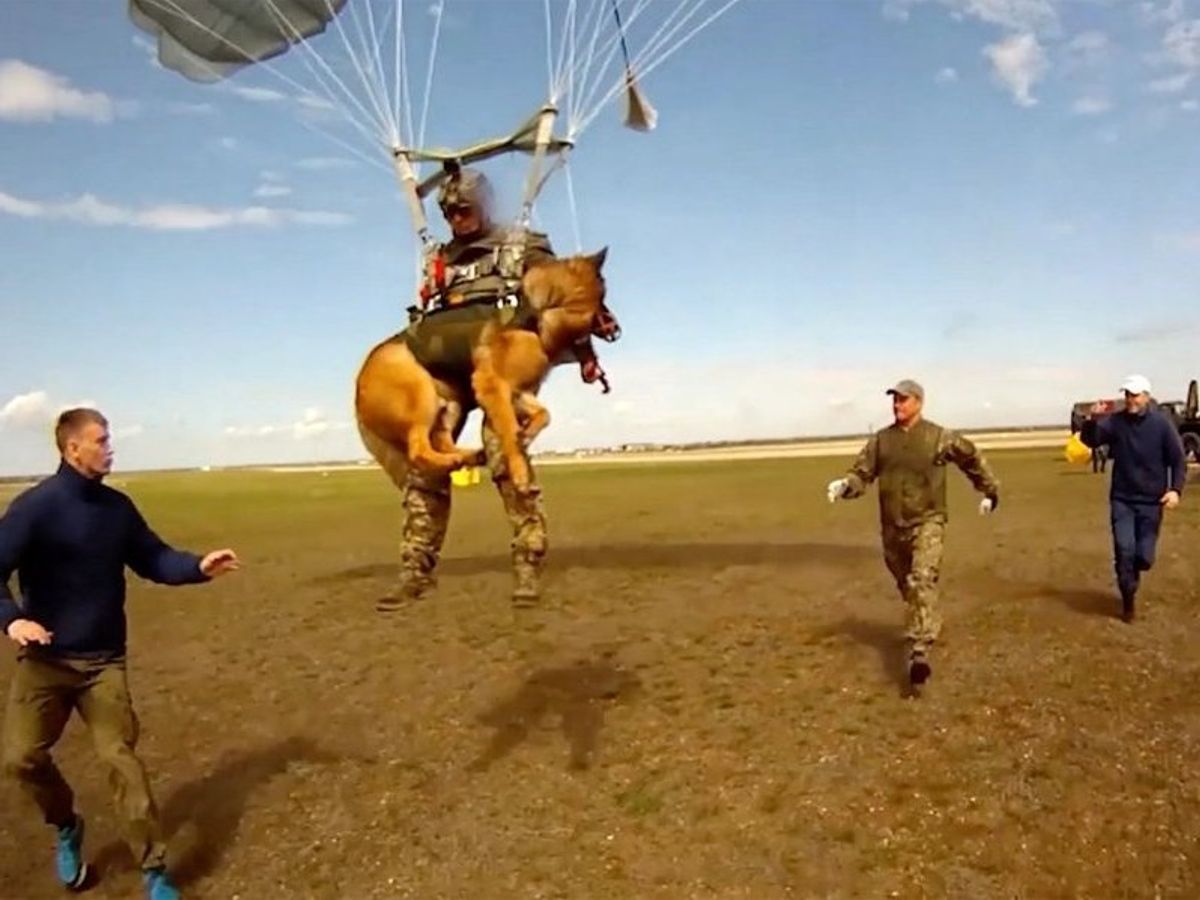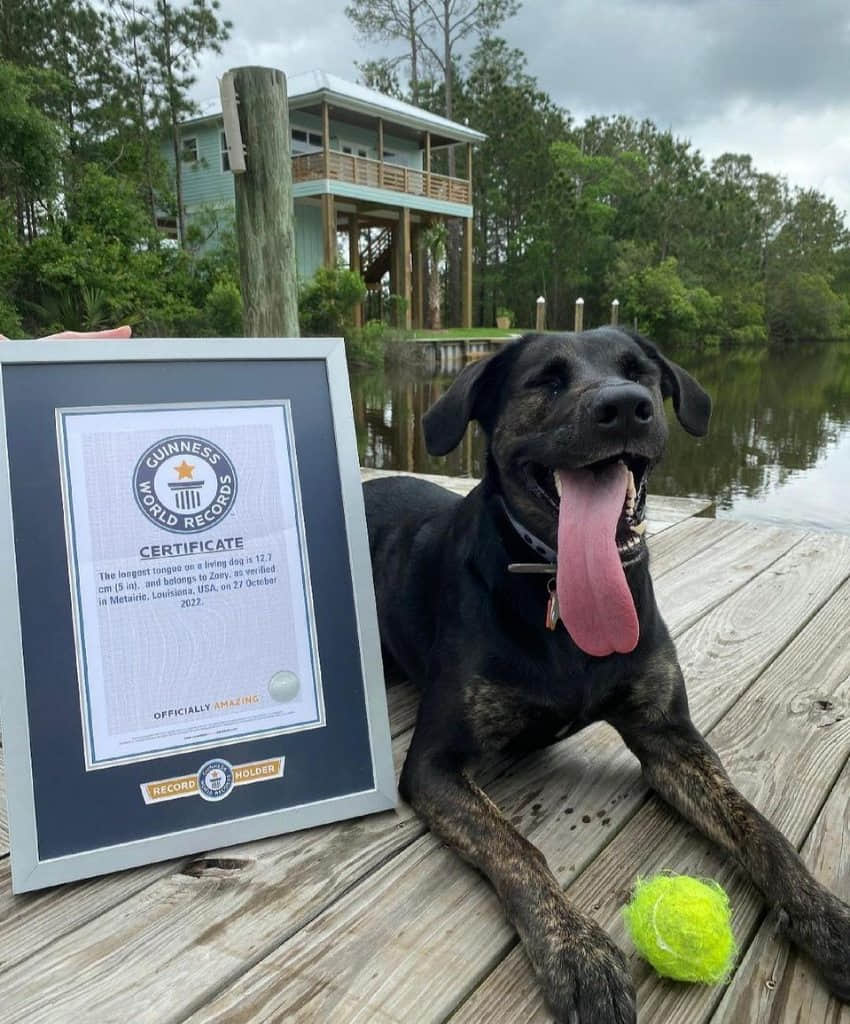Russia‘s latest military drills involve dogs of war as new parachutes are tested to land military canines in battle zones.
A video shows final tests of the special dogtroopers landing gear which Vladimir Putin has personally inspected.
The system, developed by the Technodinamika Group, is designed to airdrop a dog weighing up to 100lbs onto a battlefield with a parachutist or in tandem with a parachutist and a dog handler.
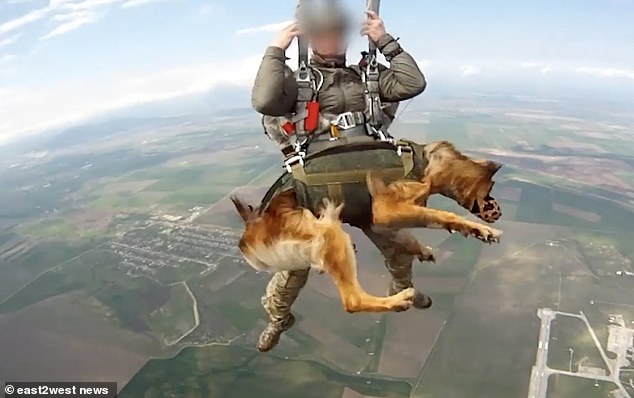
Tests have so far proved that the service animals can be dropped by parachute from as high as 13,000 feet
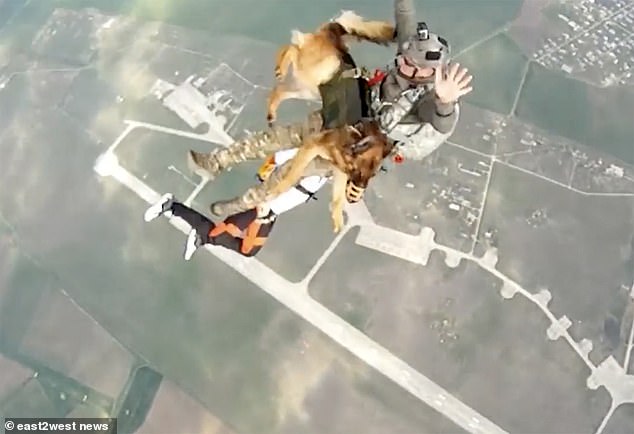
The dogs can jump with a parachutist, or with both the parachutist and a dedicated handler
‘During the first tests, an amazing fact was revealed – even from a height of several kilometres, the dog observes the earth and tries to catch it with its paws,’ the report stated.
‘Previously, it was believed that dogs cannot see so far.’
The Technodinamika Group (part of the state tech corporation Rostec) aims to complete the trials of its canine parachute system by the end of the year.
Provided the final tests are successful, deliveries of the equipment to the Russian Defense Ministry will be made from next year, according to Technodinamika Chief Parachute Designer Alexey Kozin.
‘The preliminary trials have not revealed any deviations or negative results,’ he said.
‘A dog behaves adequately after an air jump and is ready to accomplish assigned tasks upon landing.
‘The system can be used for landing almost any dog serving in the law enforcement agencies.’
The canine ‘security forces’ are often used in military and rescue operations, according to the army, but there has not been a system to parachute service dogs in Russia before, according to Technodinamika.
Putin personally visited the group’s plant to inspect the harnesses which are intended for the rapid deployment of military dogs in places where it is impossible to land planes or helicopters.
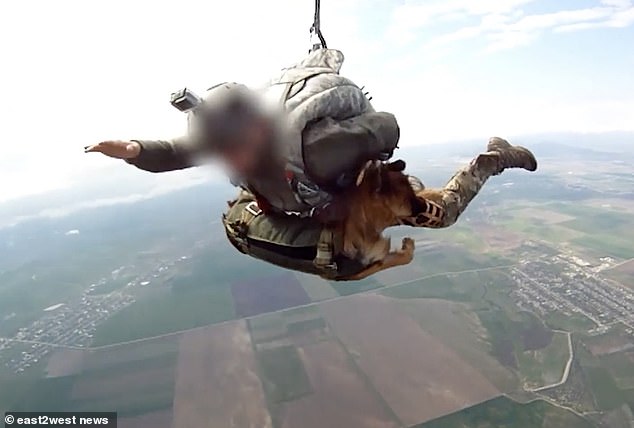
The state technology group responsible for designing the system has said it is already working on an oxygen delivery system to allow the dogs to parachute from up to 23,000ft (8km)
Test parachutist Andrey Toporkov said the dogs had to be specially prepared for the jumps.
‘We have already made eight jumps,’ he said.
‘The most important thing is to get the dogs into the aircraft.
‘They tolerate the flight and even watch the clouds through the window.
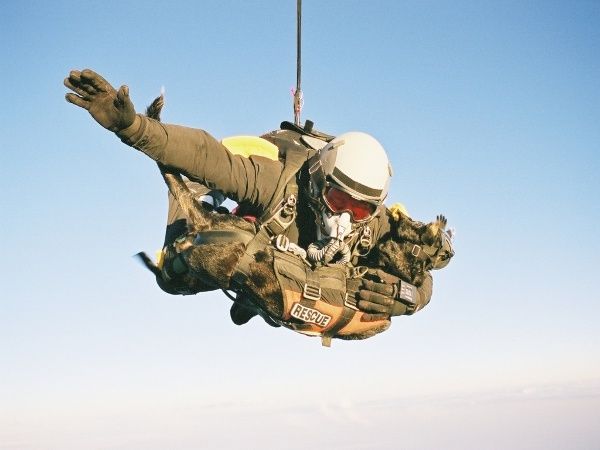
‘When the hatch opens, there is wind, noise, and thanks to the dog handler, they calm down, so there were no problems when a dog handler participated in the jump.’
A special tandem harness – seen in a picture – made by Ivanovo parachute factory allows a military specialist to jump with both a handler and a dog.

It is ‘more difficult’ when the dog jumps alone with an unfamiliar paratrooper, he said.
‘You had to get acquainted with the dog in advance, pet it, feed it with the owner’s permission, so that the dog would trust you later.
‘And you can’t be afraid yourself — dogs feel everything.’
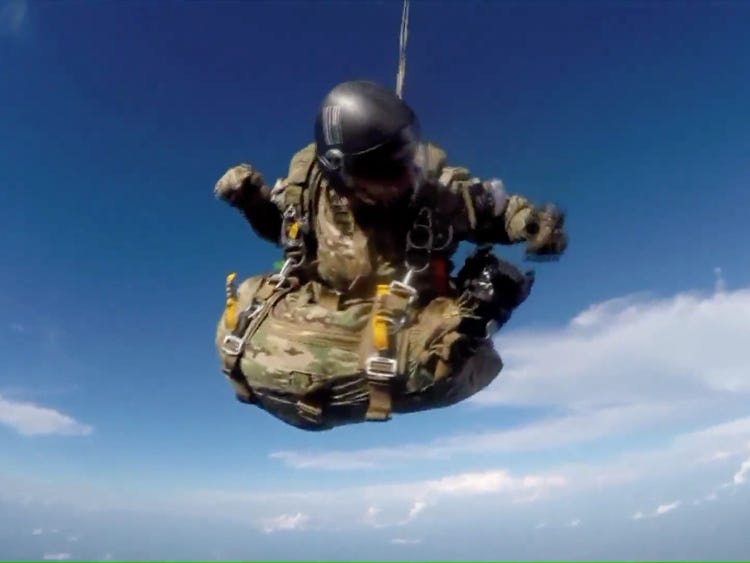
Kozin said research is underway to allow for dogs to be groups from 26,000 ft but this would require an oxygen supply.
‘We are working on the possibility of airdropping dogs from an altitude of up to 8km (26,000 ft).
‘For this, special oxygen equipment will be created to enable a dog to breathe through the oxygen gear during an air jump.’
Kozin said that Technodinamika has already begun developing the oxygen gear for the canines in association with other contractors.
